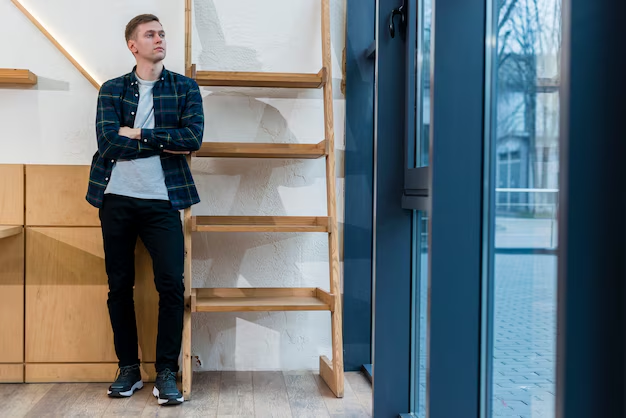Should You Really Put a Refrigerator On Its Side? A Comprehensive Guide
Moving a refrigerator can be a daunting task, not just because of its weight but also due to the many myths and guidelines surrounding its transport. One of the most common questions asked is, "Can you put a refrigerator on its side?" Let's explore this topic thoroughly and provide you with practical insights and guidance for safely moving this essential appliance without damaging it.
Why Positioning Matters
Refrigerators are complex appliances, designed to operate efficiently in an upright position. Understanding how they work and why positioning matters can prevent potential damage.
The Internal Mechanism
Refrigerators use a sealed cooling system, which involves:
- Compressor: Pumps refrigerant through the system.
- Condenser Coils: Release heat extracted from inside the fridge.
- Evaporator Coils: Absorb heat from the refrigerator's interior.
These elements work in harmony to maintain the fridge’s temperature. Placing a refrigerator on its side can disrupt this delicate balance.
The Risk of Tipping
When a refrigerator is laid on its side, oil from the compressor can flow into the cooling lines. Once unsettled, bringing it back to a standing position might not immediately resolve the issue, as it can lead to functional problems.
When It's Necessary to Lay a Refrigerator on Its Side
Although it's generally advised to keep refrigerators upright, certain situations might necessitate laying it on its side.
Tight Entryways or Clearance Issues
Sometimes, the only way to fit a refrigerator through narrow doors or tight spaces is on its side. Being strategic about this process can help minimize risks.
Transportation Constraints
In some transportation scenarios, securing a fridge upright may be impossible. If this is the case, ensure you take measures to mitigate potential damage.
Steps for Safely Laying a Refrigerator on Its Side
If you must lay a refrigerator on its side, following these guidelines can help protect it:
Choose the Right Side. Always refer to the manufacturer's instructions. If unavailable, lay the refrigerator on the side opposite the location of the compressor lines.
Secure Internal Parts. Remove all shelves and drawers or secure them with tape to prevent shifting.
Pad the Sides. Use blankets or padding to protect the exterior finish from scratches.
Allow Settling Time. Once you've repositioned the fridge upright, allow it to sit unplugged for a few hours. A general rule is to wait as long as it was on its side – for example, if it was laid down for two hours, let it settle for two hours.
Strategic Summary: Dos and Don’ts 📝
- ✅ Do: Use padding, check manufacturer instructions, and allow settling time.
- ❌ Don’t: Leave it on its side longer than necessary or power it on immediately after repositioning.
Post-Move Checklist
Once you’ve moved the refrigerator back to its upright position, it’s crucial to perform a checklist before plugging it back in.
Inspect for Oil Leaks
Check around the compressor and beneath the refrigerator for any signs of oil leakage, a potential indicator of internal problems.
Stabilize and Level
Ensuring the appliance is level can prevent noise and ensure efficient operation. Most refrigerators have adjustable legs for this purpose.
Gradual Temperature Reduction
Plug the refrigerator in and set it to a medium setting initially. Allow it to reach temperature gradually to prevent overloading the compressor.
Potential Risks and Long-Term Effects
Even when following guidelines, there are inherent risks in transporting a refrigerator on its side.
Immediate Issues
- Cooling Inefficiency: Clogged lines from displaced oil may inhibit cooling.
- Mechanical Damage: Possible damage to moving parts if not adequately secured.
Long-Term Concerns
- Compressor Issues: Long-term reduced efficiency or failure might result from internal oil displacement.
- Increased Noise: A non-upright position could lead to increased operational noise post-move.
Alternative Solutions and Professional Help
For complex moves or high-value appliances, professional movers can be an ideal option, minimizing risks of damage.
Hiring Professional Movers
Experienced professionals are equipped with the knowledge and tools necessary to move heavy appliances safely. Their expertise can prevent costly mistakes or potential appliance damage.
Using Specialized Equipment
Dollies with straps and appliance sliders can help maintain an upright position, even in challenging moves.
Creative Moving Solutions
- Removing Doors or Handles: Temporarily taking off doors or handles might enable keeping the fridge upright through tight spaces.
- Alternative Routes: Consider spatial rearrangements or alternate entry points to keep the appliance upright.
Consumer Insights and Practical Tips 🎯
- 💡 Plan Ahead: Assess the move route for obstacles or space concerns.
- 🔧 DIY Skills: Equip yourself with basic moving tools like straps and sliders.
- 📞 Seek Guidance: Don’t hesitate to contact manufacturers for specific advice or to ask about your fridge model’s unique requirements.
Final Thoughts: Protect Your Investment
Handling a refrigerator, one of the costlier home appliances, with care is crucial during any move. Understanding the potential issues of setting a refrigerator on its side and the preemptive steps required can help protect your investment and ensure its longevity. Whether you choose to attempt the move yourself or hire professionals, making informed decisions can save you both time and future repair costs.
Remember, when in doubt, always refer to your refrigerator’s owner manual or contact the manufacturer for specific guidance. With the right approach, you can ensure a smooth and damage-free transition for your refrigerator from one location to another.
